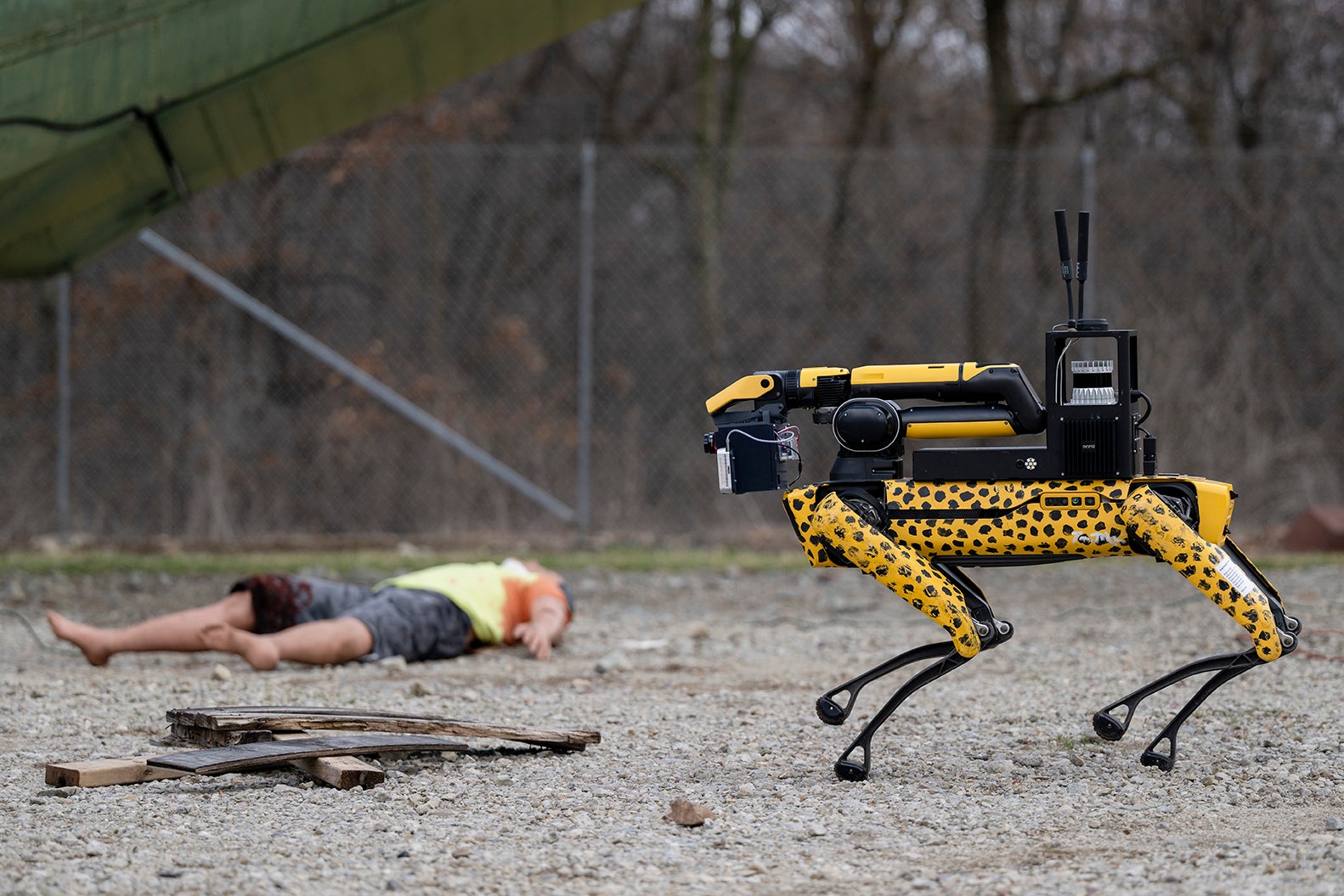
People in cardiac arrest will become brain dead within six to 10 minutes. You can bleed out all of your blood within 10 minutes. In an emergency, it is crucial for emergency medicine providers to identify the people in greatest danger as fast as possible, so they know which patients to help first.
Leonard Weiss, associate professor of emergency medicine, University of Pittsburgh, shown below, is part of a team of researchers known as Team Chiron that has developed a system using drones and robotic dogs to improve emergency responders’ ability to triage patients in the field. The team, including several researchers at Carnegie Mellon University, is 15 months into a three-year challenge through the Defense Advanced Research Projects Agency (DARPA).
“My specialty in emergency medicine is specifically for out-of-hospital care, and I work as the medical director of City of Pittsburgh Public Safety and an assistant medical director of the UPMC STAT MedEvac helicopter system,” Weiss said. “So my passion and focus is how to take care of patients in the field.”
While this project originated with the military, he said it also has civilian applications. The team recently demonstrated its capabilities in a simulated plane crash using mannequins and actors.
"It is our intention that this will be 100% autonomous, not just the ability to move, map and plan, but also the ability to gather all the physiological signatures, infer an injury pattern and send that back," Kimberly Elenberg, the principal scientist from CMU, told KDKA News.
In any emergency, Weiss said, “We're limited by time. The faster we can get to the victim, the faster we can use our life-saving care techniques. If we can reduce the time that we could get an intervention or help to the human victim while waiting for professionals to get them to the hospital, it will save lives.”
Pittsburgh, he said, has an exceptionally strong emergency medicine system (EMS). “EMS was founded in Pittsburgh, and the partnership that we've had with the Center for Emergency Medicine and the University of Pittsburgh from the beginning of that time has been essential to build, cooperatively, a partnership between paramedics and physicians. As we develop the best care, we have extensive research over these years together and top-of-the line protocols, and we deploy our physicians into the field to work side-by-side with the paramedics. And that just doesn't happen everywhere across the country.”
While speed in getting to an emergency is a factor, he said, there are times in both combat and civilian emergencies when it is hazardous for paramedics to enter the scene. The system Team Chiron is working on would help “use some reconnaissance and keep the paramedics and rescuers safe while they find the best ingress,” he said.

The system is intended to be used in any life-threatening emergency for an individual patient, such as emergency bleeding or a cardiac arrest. But it could also scale to mass casualty incidents, where multiple victims may outnumber the resources available to help them, such as a major flood, natural disaster, large-scale fire or an incident of terrorism.
Pitt brings expertise on what sensors the robots need to adequately assess patients to ensure they get the care they need most.
The restrictions of the DARPA challenge stipulate that the patient cannot be touched, so the project involves designing sensors to measure vital signs so emergency providers know what the priorities are and who needs care fastest.
For now, Weiss said the goals are to detect severe hemorrhage, a respiratory or airway emergency, wounds and abnormal vital signs, as well as the level of interactivity with the patient.
“Down the line, we will want to touch the patient to get better information medically, intervene and stop the bleeding,” Weiss said.
Weiss said he dreams that “one day you call 911 for an emergency, and one of these robots shows up on your doorstep to help until the pros get there. That's a realistic hope.”
Photography: Carnegie Mellon University
Media contact: HSNews@pitt.edu
